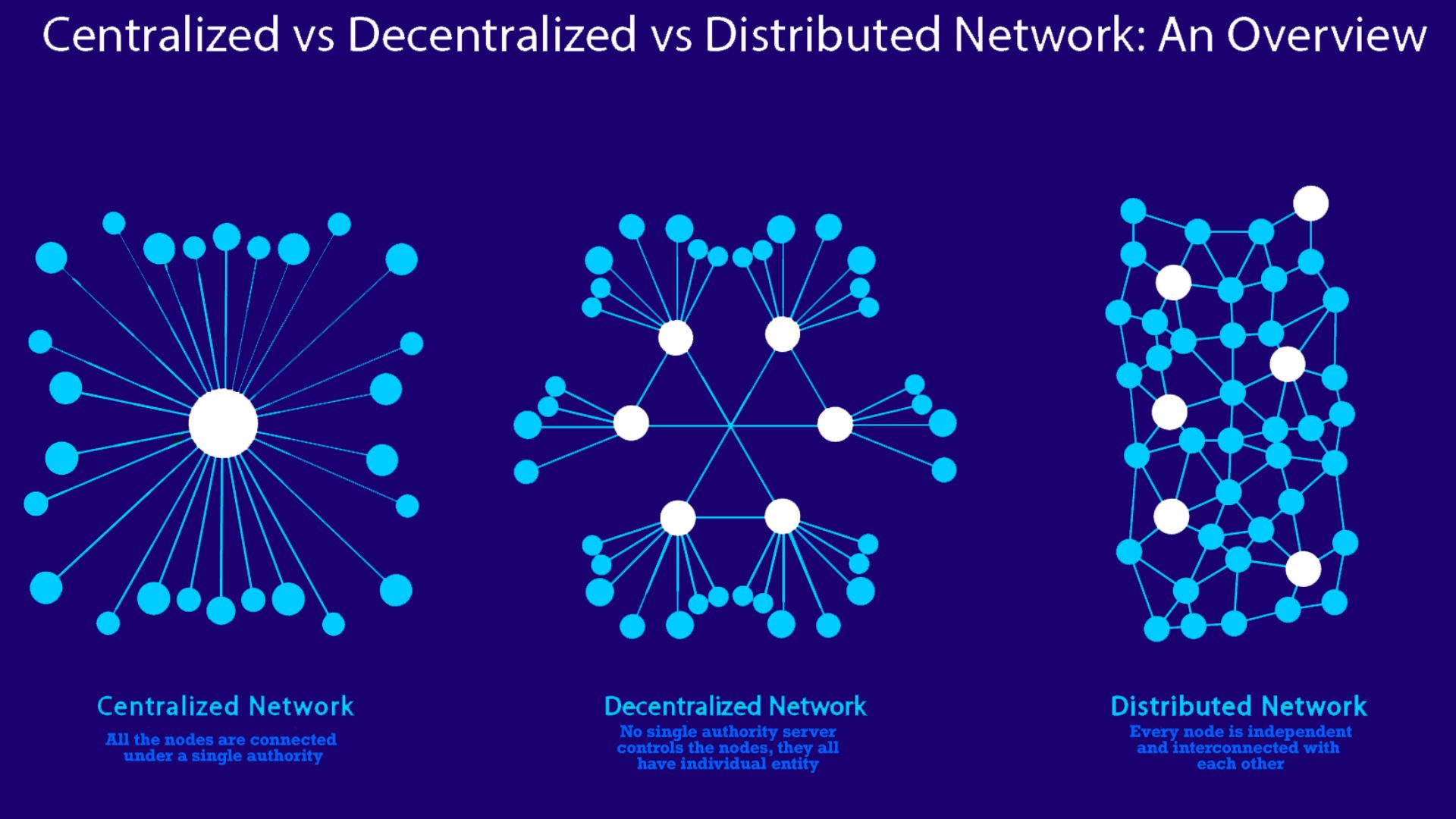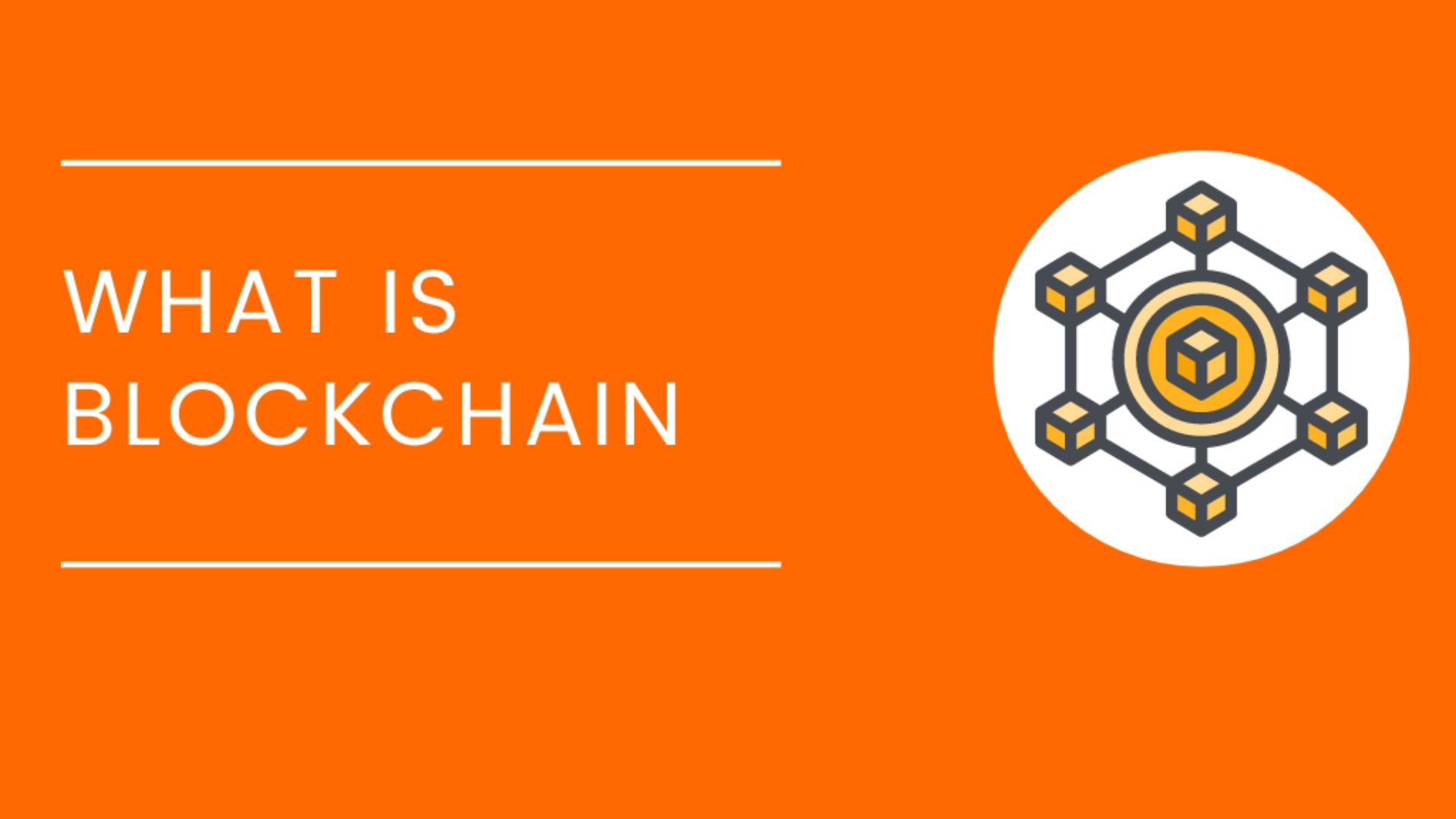How Does Ethereum Work in 2024?

How Does Ethereum Work in 2024? When launched in 2015, Ethereum was the world’s first smart contract-capable blockchain. Today, Ethereum still leads the market with tens of billions locked in smart contracts to earn yields, swap tokens, and a myriad of other uses. In this article, we’ll answer the question, ”What is Ethereum?” and explore what may lie ahead for what many have dubbed a “world computer.”
What is Ethereum?
Ethereum is a decentralized worldwide network of connected computers that follows a set of rules termed the Ethereum protocol. The network’s native programming language, Solidity, permits the use of smart contracts, which are computer programs that execute on the network itself.
Each of these contracts lives at an address on the network, and anyone can engage with the contracts, independent of geography, credit score, or other criteria. These smart contracts allow Ethereum to support a wide range of applications ranging from decentralized finance (DeFi) to selling assets in metaverse environments to decentralized voting.
The Ethereum network is powered by more than a million validator nodes globally, each working to update the blockchain and validate transactions. Often, the name Ethereum is also used to designate the cryptocurrency of the Ethereum network. While this Ethereum definition isn’t technically true (ether (ETH) is the cryptocurrency), you’ll nevertheless see both terms used interchangeably. ETH is both fuel for the network and a medium of exchange used to buy other goods or assets or to pay for services.
The Origin and Development of Ethereum
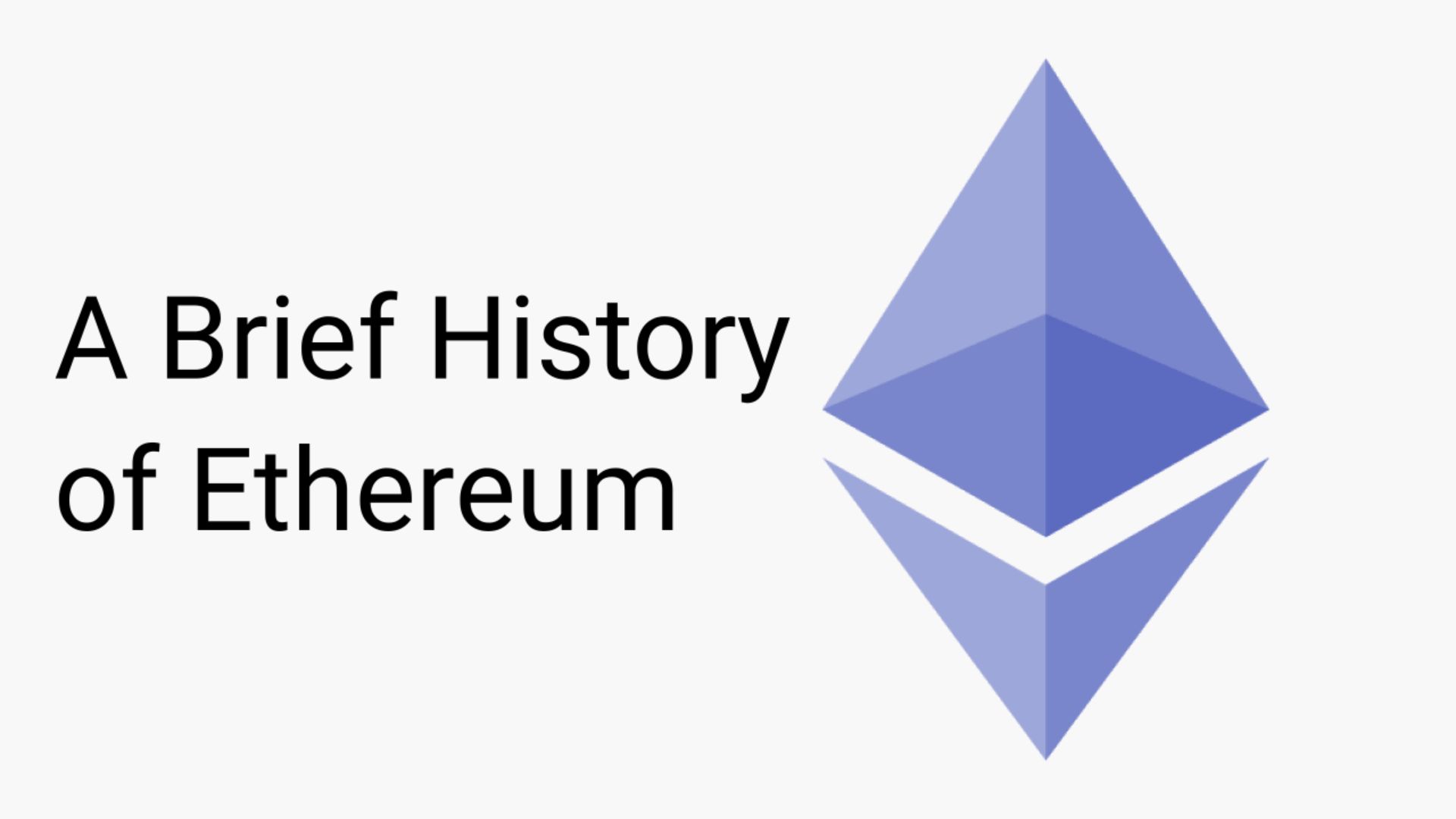
Ethereum was originally envisioned in 2013 by Vitalik Buterin, a programmer and co-founder of Bitcoin Magazine. By 2014, Vitalik had produced the Ethereum Whitepaper, an in-depth explanation of the theoretical blockchain network, including details of how it would work. In the oft-cited document, Vitalik described Ethereum as a “Next-Generation Smart Contract and Decentralized Application Platform,” contrasting the intended network’s features with Bitcoin. At the time, Bitcoin was the only cryptocurrency.
Vitalik announced the new Ethereum blockchain project during the North American Bitcoin Conference in Miami, in January 2014. Several co-founders worked together to bring Ethereum to reality, including Vitalik as well as Gavin Wood, Anthony Di Iorio, Joseph Lubin, and Charles Hoskinson. Amir Chetrit, Jeffrey Wilcke, and Mihai Alisie are also regarded as co-founders of the initiative.
Gavin Wood went on to co-found Polkadot. Charles Hoskinson later co-founded Cardano. Joseph Lubin became known as the founder of Consensys, the blockchain startup behind the industry-leading MetaMask crypto wallet. Development continued throughout 2014, during which the team constructed Frontier, which would become the first live version of the Ethereum blockchain.
On July 30th, 2015, the Ethereum network went live, launching the Genesis Block, containing roughly 8900 transactions. Frontier gives Ethereum miners a framework to begin mining ether and safeguard the network. When built, the Ethereum network used proof-of-work consensus, much like Bitcoin. Proof-of-work consensus requires miners to commit resources (electricity) to solve for a nonce, a number used just once. Ethereum later changed to proof-of-stake consensus, a less energy-intensive consensus mechanism first suggested in Peercoin’s 2012 white paper.
How Ethereum Works: The Technology Behind the Currency
Ethereum employs a blockchain, much to Bitcoin, grouping transactions into blocks and then combining these blocks using cryptographic hashing to create a chain. However, where Ethereum departed from Bitcoin’s position as a digital currency and decentralized ledger is Ethereum’s capacity to enable complicated smart contracts.
This offers Ethereum both money (ether), similar to bitcoin, but also the capacity to use that currency and other digital assets in novel ways. The nickname “world computer” refers to Ethereum’s status as both a blockchain and a software platform.
How Does Ethereum Work?
To explain how Ethereum works, let’s explore an example. First, let’s look at the types of transactions supported by blockchain.
- Normal transaction: ETH sent directly from one wallet address to another.
- Internal transaction: ETH transfer using a smart contract as an intermediary.
- Token transfer: A transfer of ERC-20 or ERC-721 tokens.
We’ll use a normal transaction for this example: Person A sends ETH to Person B.
- A transaction is created by Person A. For example, Jack wants to send Jill 2 ETH. Jack’s payment includes a gas fee paid in ether.
- The transaction is hashed (encoded cryptographically) to create a transaction ID, also called a txhash. To make the transaction unique and prevent double-spending, the hash also includes a nonce (a number used only once).
- The transaction is then broadcast to the Ethereum network. A validator selects the transaction and includes it in a block for verification.
- A subset of validators verify that transactions in the block are legitimate. If these validator nodes agree that the transactions follow protocol rules, the block and its transactions become finalized.
In the end, Jack’s wallet address is debited 2 ETH plus the gas fees paid; Jill’s wallet address is credited 2 ETH. More complicated transactions run on the Ethereum Virtual Machine (EVM), which provides functionality for smart contracts while segregating validators from code run within the virtual environment.
The Role of Blockchain in Ethereum
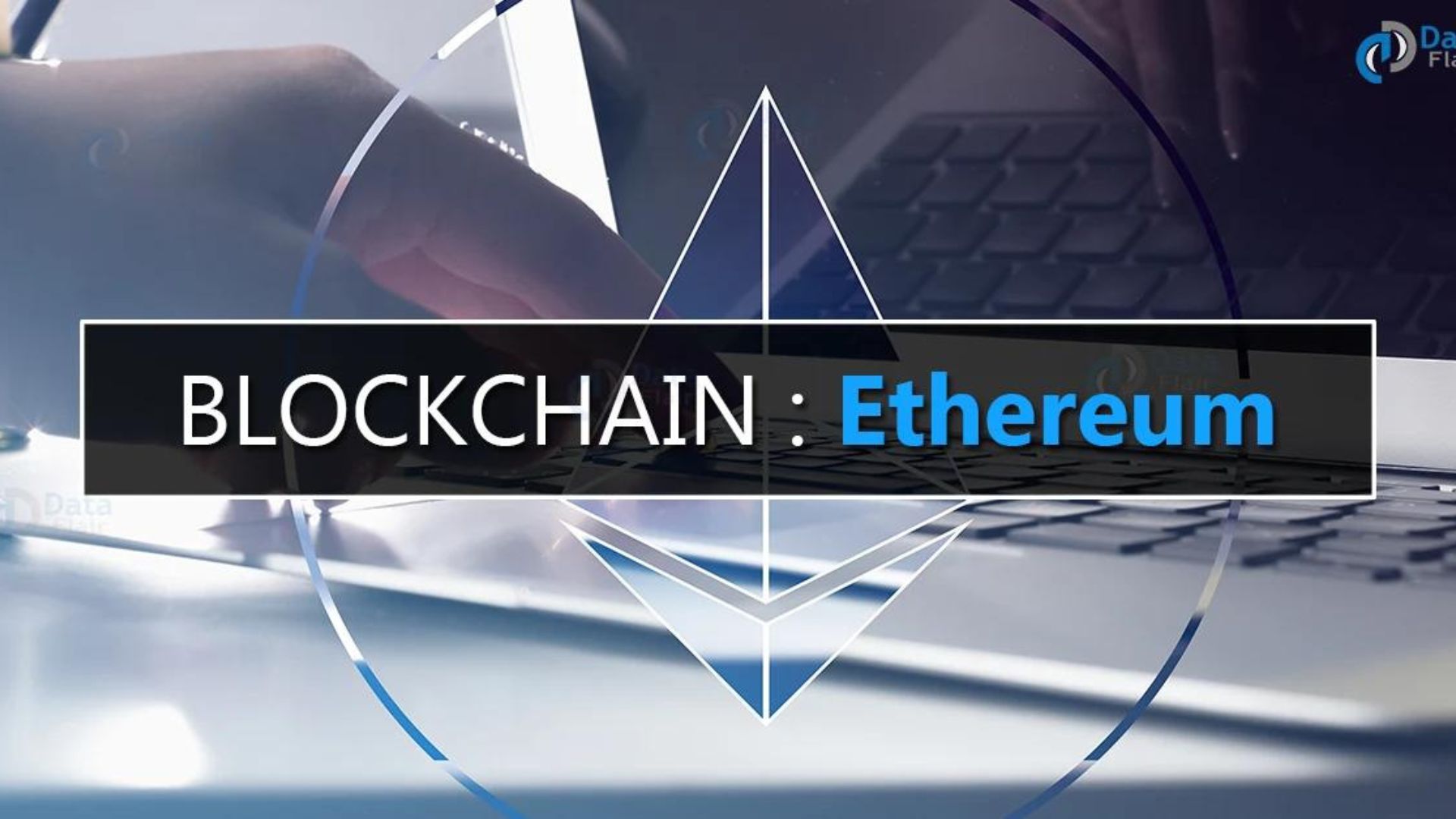
The Ethereum blockchain functions as a ledger, meaning a record of transactions and wallet address balances. Each block is a container to hold transactions. Each component contains a hash of the previous block, joining the blocks sequentially to form a chain. Blocks act as containers but also record the status of the blockchain, like a snapshot in time. Once validated, the block is added to the chain, and the updated version of the chain propagates throughout the network.
Unlike Bitcoin, which limits blocks by data size, Ethereum has a target block size based on gas (transaction costs). The network targets 15 million gas per block but can enlarge blocks to 30 million gas if needed based on network congestion.
Like Bitcoin, the Ethereum blockchain is immutable. Once a transaction is finalized, it remains that way on the blockchain forever.
Encryption and Security Measures
Ethereum uses hashing across every level of blockchain transactions. Hashing refers to cryptographic encryption that encodes data into a hexadecimal (letters and numbers) value, also called a hex.
- Each transaction is hashed.
- Blocks are hashed.
- Wallet addresses are hashed.
Ethereum uses the Keccak-256 algorithm to calculate the hash, resulting in a 256-bit string of letters and numbers that is 64 characters long. However, the protocol prepends “0x” to the beginning of hash values to denote both numbers and letters. This makes block hashes, for example, 66 characters long.
Ethereum Wallet Addresses and Keys
The protocol also uses hashing for wallet private keys and public addresses.
In the Genisis Block, wallet address 0x756F45E3FA69347A9A973A725E3C98bC4db0b5a0 received 200 ETH. The address is derived from hashing but uses some extra steps to arrive at a 40-character hex versus a 64-character hex. The prepended 0x brings the character count to 42.
- Private keys use a 66-character hash, including the leading 0x.
- Public keys use a 130-character hash, including the leading 0x.
- Public wallet addresses use a 42-character hash, including the leading 0x.
Public keys are derived from private keys. Public wallet addresses, also known as externally owned accounts, are derived from the last 20 bytes of the public key.
Ethereum’s Keccak-256 algorithm always creates the same hash for the same input. However, encryption is one way, and there is no way to reveal a private key from a public key or address.
Ethereum uses private keys to sign transactions.
For instance, Jack would use a wallet app to initiate the transaction if he wanted to send Jill 2 ETH. For Jack to use Jill’s public address, he must input it. As part of the approval process, Jack’s wallet conceals his private key while using it to authorize the transaction.
If Jack has been diligent about safeguarding his private key, no one other than Jack can access his blockchain assets. Nevertheless, Jack’s assets can be controlled by anyone who obtains either the private key or the recovery phrase for his wallet.
What is Ether?
Ether is the fuel for the Ethereum blockchain. Although the term Ethereum is often used to describe the cryptocurrency of the Ethereum network, ether is the actual currency used.
- Ethereum typically refers to the blockchain, protocol, or network.
- Ether is the cryptocurrency that pays for transactions and processing power on the network.
However, two other units of account come into play as well: wei and wei.
- Gwei: Each ETH equals 1 billion gwei.
Short for gigawatt, gwei is often used in gas fee quotes, although Ethereum wallets usually convert fees to USD or other currencies for convenience.
- Wei: Each gwei equals 1 billion wei.
Wei refers to the smallest denomination of ether.
Gas fees on Ethereum vary based on bandwidth, space, and computational difficulty of smart contracts.
ETH Supply
By adding legitimate blocks to the blockchain, Ethereum network validators earn fees paid in ether. To increase the supply, the Ethereum protocol creates new rewards at random.
By transferring ether to an untraceable address, the protocol burns base transaction fees, reducing supply.
In general, the outcome has been marginally deflationary ever since the community approved Ethereum Improvement Proposal (EIP) 1559, which allowed the protocol to burn base fees.
What is Ethereum 2.0?
With the release of Ethereum 2.0, the network’s consensus mechanism shifted from proof-of-work (PoW) to proof-of-stake (PoS). Ethereum solely relied on PoW for transaction validation up until December 1, 2020. The Beacon Chain, Ethereum’s proof-of-stake (PoS) chain, went live in late 2020. Before “the merge” on September 15, 2022, the Beacon and Mainnet chains operated independently.
Staking, introduced with Ethereum 2.0, is a way for ETH holders to contribute to the network’s security while also earning rewards through Ethereum staking platforms.
Sharding, an upcoming upgrade to the Ethereum network, would enable the splitting of the Ethereum blockchain into 64 smaller chains, or shards, with their own transaction histories and blockchain states. The merger also set the groundwork for this upgrade.
But shard chains aren’t going anywhere anymore. The developers of Ethereum, on the other hand, are aiming for Danksharding, a scaling method that could increase the network’s transaction capacity to 100,000 per second. The Ethereum network can handle twenty to thirty transactions every second at the moment.
Can You Mine Ethereum?
Mining on Ethereum came to a halt when the network adopted proof of stake. Nonetheless, Ethereum Classic is still mineable and employs the proof-of-work algorithm. After a 2016 fork, the majority of Ethereum users stuck with the main chain, which is now known as Ethereum 2.0.
How to Buy Ethereum
Ethereum, the second most valuable cryptocurrency by market cap, is easily accessible on cryptocurrency exchanges all over the globe. The simplest way to begin is to use a cryptocurrency exchange or broker like Coinbase or eToro to purchase Ethereum (ETH) or any other cryptocurrency with fiat currency like USD, GBP, or any other.
To get started, you can follow these basic steps using Coinbase as an example.
- Sign up for an account. Visit Coinbase and tap the “Sign Up” button.
- Complete identity verification. Coinbase requires users to verify their identity by uploading a copy of their passport or government-issued identification. This step is to comply with regulations.
- Link a payment method. Coinbase supports bank accounts and debit cards in many countries. Some areas also support PayPal as a payment method.
- Choose an investment amount. Consider how much you want to invest and whether you want to invest regularly. Coinbase supports one-time deposits and recurring purchases funded by your chosen payment method.
Buy ETH. With just a few clicks, you can complete your purchase when you’re ready by using the Buy & Sell button. Instead, you can take advantage of Coinbase’s advanced trading feature, which allows you to trade with reduced fees.
We will go over self-custody wallets next, but once you’ve made your purchase, you might wish to keep your Ethereum in one. We have a specialized guide to purchasing ETH on eToro in under five minutes in case you are still uncertain about Coinbase.
Choosing an Ethereum Wallet
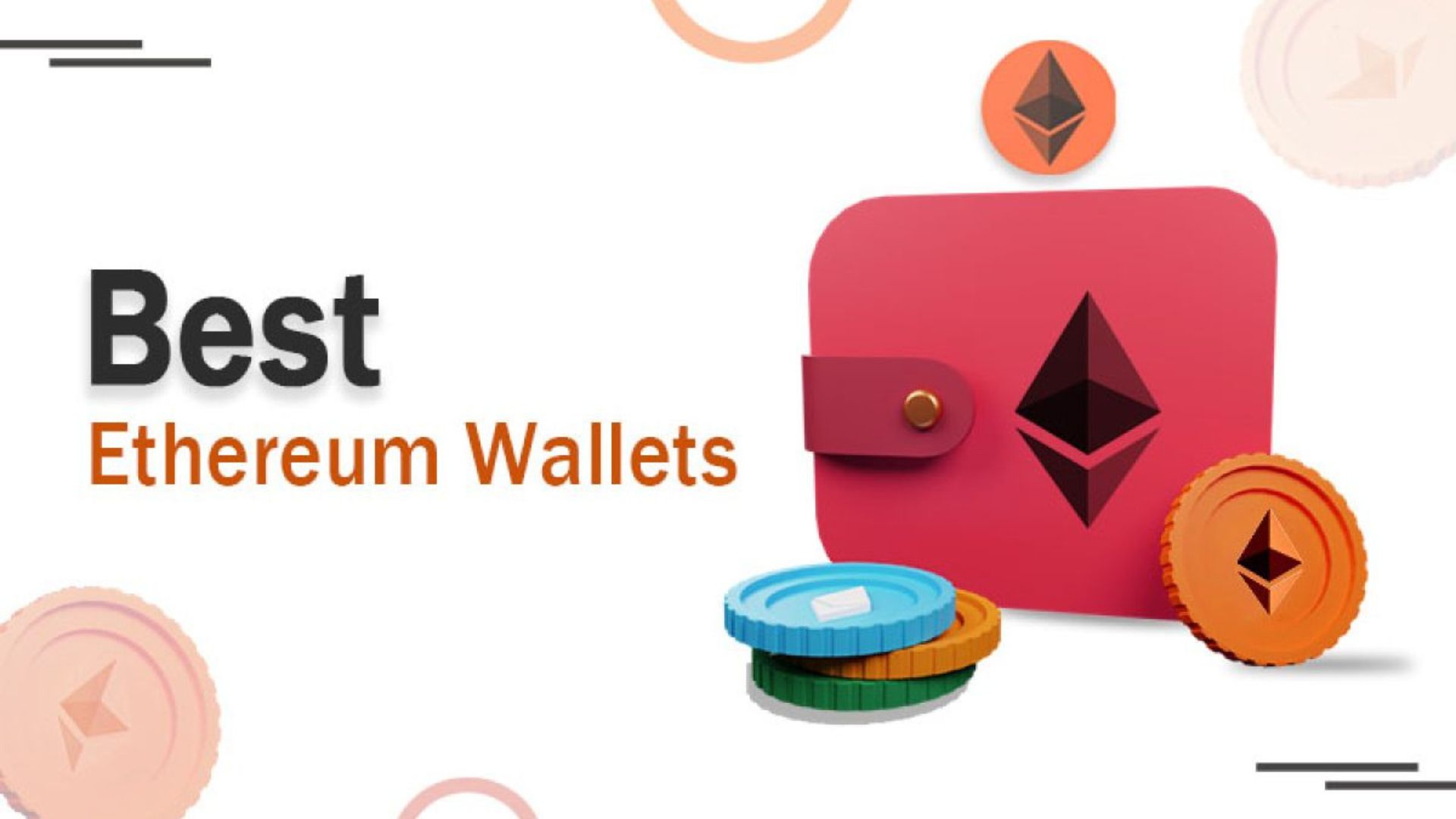
Your private keys to your blockchain-based crypto assets are stored in a cryptocurrency wallet. You have the option of using a hot wallet a cold wallet, or a hybrid of the two. Coming up on that shortly.
With a hot wallet, your private keys are created and stored on an internet-connected device. Hot wallets are software wallets that can be accessed through mobile apps or browser extensions.
Your private keys are generated and stored offline by cold wallets. Cold wallets typically take the form of physical devices that can be connected to a wallet app through USB or QR codes as the need arises.
- Hot wallets offer more convenience. You can easily connect to decentralized applications to use your cryptocurrency. However, as software, they may have bugs or flaws that could make them more vulnerable to exploits.
- Cold wallets stay offline and work much like two-factor authentication. To spend or send ETH or tokens, you’ll need to press a button to confirm the transaction on your device.
Each is also an option. The most widely used hot wallet, MetaMask, for instance, is compatible with hardware wallets from industry heavyweights Trezor and Ledger. You can safeguard your assets with keys kept offline in your hardware wallet and effortlessly connect to decentralized applications with this setup.
Utilizing Ethereum: From Payments to Investments
We already know ether is used to pay for transactions on the network. However, ETH is a currency with many uses, and the popularity of the Ethereum blockchain means ETH has value outside the network as well.
- Buy NFTs. Non-fungible tokens (NFTs) represent ownership. The most common use is the NFT collections most of us are familiar with, including the Bored Apes collection. However, an NFT can represent ownership of anything. At some point, you may see real estate and other assets commonly available in tokenized NFT form.
- Swap for other assets. You can swap your ETH for other cryptocurrencies on decentralized exchanges like Uniswap.
- Buy real-world goods and services. Retailers like Newegg accept ETH as payment for electronics and other items.
- Earn yields. The world of DeFi offers countless ways to earn a yield with your ETH. For example, the simplest of these is through liquid staking. Platforms like Lido let you deposit your ETH into a smart contract in exchange for a liquid staking token that pays a yield from staking rewards. You can then hold or swap your tokens as needed — or even use them as collateral in a lending app like Aave.
- HODL. Of course, you can simply hold your ETH for potential future price appreciation. The crypto community calls this HODLing. If you’ve staked your ETH through an exchange like Coinbase or a liquid staking protocol like Lido, you can earn a healthy yield, often about 3.5%, just to wait.
Common Misconceptions and Myths about Ethereum
Crypto is still a new industry, rife with myths, misconceptions, and simple misunderstandings. Let’s examine a few.
- Ethereum and crypto are anonymous. Cryptocurrency is pseudonymous, meaning your wallet address becomes your identity for the transaction. Following the right set of footprints, it’s often easy to match a person to a wallet address.
- ETH and crypto are only for techy people. On the contrary, cryptocurrencies were invented to give people more freedom in financial transactions. Certain aspects of the experience still need some usability improvements, but wallets, exchanges, and decentralized applications have all become much more accessible.
- Ethereum 2.0 will process 100,000 transactions per second. Not yet. While numbers like that may be on the horizon with the development of Danksharding, the Ethereum team also states that several other upgrades must take place before that becomes a possibility.
- Vitalik runs Ethereum. This is false. While Vitalik Buterin (co-founder and author of the Ethereum white paper) remains active in the project, Ethereum is community-governed. ETH holders vote on Ethereum Improvement Proposals (EIPs). If a proposal passes, the developers get to work on implementing the changes.
- All smart contracts are safe. This isn’t true. Some protocols, such as Aave and Uniswap, have undergone dozens of independent audits, while others haven’t been audited at all. Many crypto projects make their source code available so coders around the world can evaluate the code. However, bugs can still occur, and smaller projects can fly under the radar unnoticed. Research decentralized applications carefully before connecting your wallet.
Ethereum Regulation and Legal Aspects
Most of the world, including big markets like the US and the UK, allows buying, selling, and possessing ETH. But some parts, like staking and especially DeFi, are still shrouded in regulatory ambiguity. Decentralized exchanges are currently unregulated but are drawing the attention of regulatory authorities such as the SEC. Regulators may have a hard time deciding who to go after or how to apply their rules because many of these are also community-governed.
In terms of how susceptible they are to prohibition or regulation by governments, crypto assets often fall into one of three groups.
- Safest: Bitcoin. With a fair launch and decentralization, most investors feel Bitcoin falls into the safest category. Other fair launch (no pre-sale) projects may share this category.
- Safer: Ethereum. ETH had a pre-sale. However, comments from the SEC suggest that regulators see the project as now sufficiently decentralized.
- Not as safe: Everything else. Smaller projects can become easy targets for well-funded regulators and law enforcement officials, including the LBRY project (sued by the SEC and now defunct) or Tornado Cash, in which the US DOJ charged the project’s developers with money laundering. The trial has not yet started.
There are still some growing pains for the cryptocurrency sector to go through, and the courts have not yet determined several legal aspects. This poses additional dangers for investors. Nevertheless, the lack of clarity may be causing prices to remain lower than they otherwise would.
Evaluating Ether as an Investment
After starting at less than $1, the value of Ethereum (ETH) increased to approximately $5,000 by 2021, providing early investors with enormous gains. Predicting future increases of such magnitude, meanwhile, is probably unrealistic. Also, the price of Ether can change a lot. From its all-time high, ETH has fallen over 60% as of this writing. One could argue that the Ethereum project is in a considerably stronger position now compared to when it was at its peak. Once the merge is out of the way, the project can make small but significant modifications to fix scalability problems and attain its full potential. The community is expanding, and the network is still going strong. Compared to levels seen in 2021 and 2022, the total value locked (TVL), which is a measure of the funds locked in network smart contracts, is significantly lower.
Having said that, TVL has been stable and even increased a little during the past few months. Concerning the future of ETH, there are probably just as many reasons to be apprehensive as there are to be hopeful.
-
- On the positive side, big players like BlackRock and GrayScale are trying to bring spot ETH ETFs to market. Long-term, increased demand is bullish for prices when supply is limited.
However, ETH prices could remain low due to regulatory uncertainties. Another factor that could reduce Ethereum’s appeal is the emergence of newer smart contract networks like as Tron, Solana, Polygon, Avalanche, and Sui.
The Risks and Challenges of Ethereum
Even as one of the more established blockchain networks, the road ahead for Ethereum remains uncertain. Some of Ethereum’s challenges stem from outside forces, like regulators, whereas others come from the structure of the network itself.
- Ethereum’s number of validators could affect efficiency. The number of validators on the Ethereum network has grown steadily since the conversion to proof of stake. On an Ethereum test network, an overabundance of validators was shown to decrease efficiency.
- Transaction costs remain high. Rising transaction costs, particularly when the network is busy or when ETH’s price spikes, make Ethereum impractical for many smaller transactions. Over time, scalability solutions like Danksharding and rollups could help increase throughput and ease gas costs.
- Ethereum is comparatively slow. At an optimistic 20 to 30 transactions per second, Ethereum compares poorly with alternatives like Tron (2,000 TPS), Avalanche (4,500 TPS), and Solana (up to 65,000 TPS). Layer 2 networks like Arbitrum help users transact faster but may not offer the same levels of liquidity and the same dApps found on Ethereum Mainnet.
- Price volatility could alienate traditional investors. Ethereum ETFs are on the horizon and growing awareness could bring more demand from retail and institutional investors. However, price volatility could temper demand.
Practical Aspects of Using Ether
Trading and using ether comes with a small learning curve, but many of the strategies for using ETH safely parallel those of traditional finance.
- Use strong passwords. On exchanges, in particular, use strong and unique passwords to prevent access to your trading account. Also, set up two-factor authentication that requires approval from a device in your possession.
- Protect your private keys. Your wallet’s private keys control your ETH and other assets on the blockchain. Never share your keys or save your seed phrase on your computer (or to a cloud service).
- Consider a hardware wallet. A cold wallet generates and stores your private keys offline, offering the most protection.
- Avoid suspicious links. Phishing, imposter sites, and fake apps exist. Exercise caution and go directly to the website by typing the correct address rather than trusting links you find on discussion boards, social media, websites, or email messages.
- Research protocols before connecting your wallet. If you’re considering using a decentralized application, search for audit reports and hacks.
Educate yourself on how protocols work. DeFi brings more autonomy to users but also comes with some risks. Lending apps and perpetual exchanges can cause your holdings to be liquidated in some cases. Decentralized exchanges allow easy swaps, but as your trade volume increases in a specific trade, exchange prices become less optimal.
The Future of Ethereum
It would appear that Ethereum’s future is bright, given that it is the biggest smart contract network globally. Improvements to sharding techniques and rollups, a method of processing transactions on an isolated EVM before sending them to the Ethereum Mainnet, were among the features introduced in Ethereum 2.0.
For ETH to continue to grow, adoption is crucial. The stability of older networks may have been compromised in favour of the newer ones, which offer cheaper and quicker transactions. Many of the issues with the blockchain’s transaction speed and cost might be fixed as Ethereum development progresses.
Ether’s price takes prospects into account in addition to present demand and supply. Many people thought Ethereum would be worth less than $500 when the market was at its worst. Before getting to that range, the market bounced. At its current price, Ethereum is trading about 60% below its all-time high. However, many believe that prices will continue to rise in the years to come. By 2030, they predict that Ethereum will have reached about $30,000.
Closing Thoughts: Is Ethereum Right for You?
To this day, Ethereum is still seen by many as a highly promising cryptocurrency. Investments in cryptocurrencies, however, carry a higher collective risk than many more conventional investment options.
By instituting a clear burning strategy for base fees and regulating the supply of ether through staking rewards, the upgrade to Ethereum 2.0 brought stability to the asset that had previously been subject to inflation. Ethereum (ETH) is becoming increasingly appealing as an investment and a medium of exchange due to rising network demand and somewhat deflationary supply.
Ethereum stands out from other cryptocurrency investments that do not provide a dividend natively due to its sustainable staking yields. Staking yields, like dividend stocks, allow some investors to earn money while they wait.
But not every investor should get Ethereum. Ethereum and similar cryptocurrencies may contain more inherent risk than more conventional investment options due to their highly volatile prices and, in the face of uncertain regulations, even existential danger. Make sure you can afford to lose any amount of money you invest, and weigh the risks against the potential rewards.
